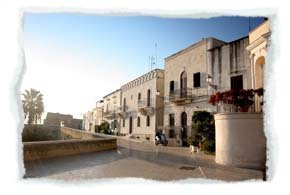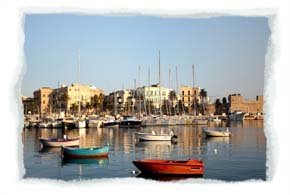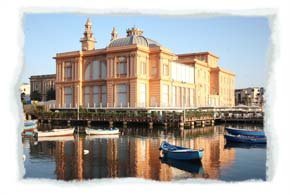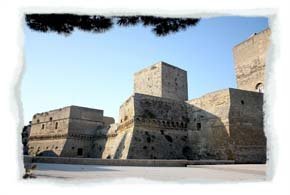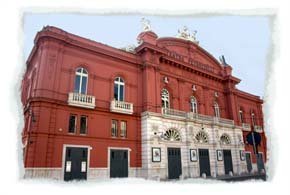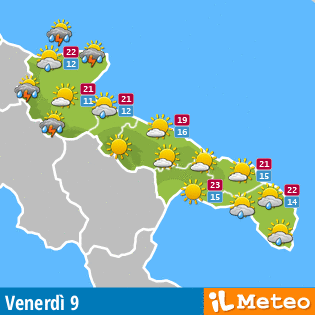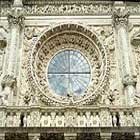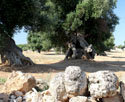Bari
Info Bari
-
Region:
Provincie:
Municipality:
CAP:
Area code:
Surface:
Population:
city hall:
-
Apulia
Bari
Bari
70121-70132
080
117,30 Kmq
313.213
Corso Vittorio Emanuele 84
Bari is the largest and economically most important city on the Adriatic sea
The city of Bari is the chieftown of Apulia and it appears as a very rich and dynamic town. It is the ninth most-populated city in Italy and the third most important city of Southern Italy after Naples and Palermo. It was founded by Illyrians and then became a roman city being a strategic centre on the Via Traiana; subsequently it was under the dominance of Longobards, Arabians and Bizantynes until the Norman conquest.
During the Middle Ages the history of the city is deeply linked with the cult of San Nicola, whose survivals arrived in Bari in 1087, and with the construction of the famous Basilica dedicated to him, which make the city one of the most important reference point of Christianity. In 1500 Bari experienced a moment of great glory thanks to the court of the duchess Isabella D’Aragona. In 1813, during the Napoleonic reign, the King Murat inaugurates the new town which brings his name (quartiere murattiano) characterized by large orthogonal streets. The old town, which is the real popular heart of the city, lies on a little peninsula; it is marked by many alleys, arches and courts and it is defended by ancient walls, on which it is possible to walk admiring the beautiful view.
The Cathedral dedicated to San Sabino was built in the 12th century and it was erected on the previous early Christian Basilica dedicated to Santa Maria, which can be seen under the central nave of the medieval church. The present Romanesque Cathedral was rebuilt after 1156 when the Norman Guglielmo il Malo destroyed it. During the second half of the 18th century the church was completely transformed being enriched with stucco works and marble decorations according to the baroque taste; these ornaments were removed at the beginning of the 20th century. The Cathedral shows only one of the two original bell towers, the other one fell down in 1613; where the central nave meets the transept, it is possible to admire an high octagonal tambour on which a richly decorated dome is based with its beautiful Arabic ornaments. The salient façade is adorned with a sequence of little hanging arches which are based on caryatids marked by fantastic forms and with a rose window richly decorated in the arched lintel.
In the Cathedral Museum it is possible to see a precious illuminated scroll which dates back to the 11th century and which was used during the Easter liturgy. The Basilica of San Nicola is the main symbol of the city; it was erected in order to keep the Saint’s relics, arrived in Bari in 1087 and placed in the crypt only two years later, in 1089, when the Basilica was already finished and consecrated by Pope Urbano II. The upper church, consecrated in 1197, is one of the greatest masterpieces of Apulia’s Romanesque. The interior is characterized by a Basilical plan with three naves and a transept and it is possible to admire two unique pieces of the medieval sculpture: the ciborium with illustrated capitals and the bishop’s throne. In 1661 the truss ceiling of the central nave was covered by a golden wooden ceiling decorated with images related to the life of San Nicola; this beautiful work was realized by a local artist named Carlo Rosa, who came from Bitonto. The salient façade, adorned with pilasters and little hanging arches, is framed by two magnificent towers, one of which is called del Catapano.
In the old town, it is possible to visit the Romanesque churches of San Gregorio, San Giovanni Crisostomo, the monastery of Santa Scolastica and the church of the Vallisa. The Castello Normanno-Svevo is the main symbol of the civil power of the city; it was erected by Ruggero il Normanno in 1131, destroyed by Guglielmo il Malo in 1156 and rebuilt by Federico II. The castle is characterized by squared towers and a large and deep fossate. In 15th century Isabella D’Aragona and her daughter Bona Sforza, queen of Poland, transformed it in a Renaissance Palace. The legend says that this is the castle where Federico II met San Francesco coming back from the Holy Soil.
In the modern town it is possible to visit the municipal theatre Piccinni which was designed by the architect Niccolini and inaugurated in 1854, the theatre Margherita which was built at the beginning of 20th century as a sort of Liberty palafitte on the sea, the theatre Petruzzelli inaugurated in 1903, the palace of the Apulia’s Aqueduct, built in 1921, and the palace of the Province where it is possible to admire a rich picture gallery with works which date back to a long historical period which goes from Middle Ages until the Contemporary Age.


